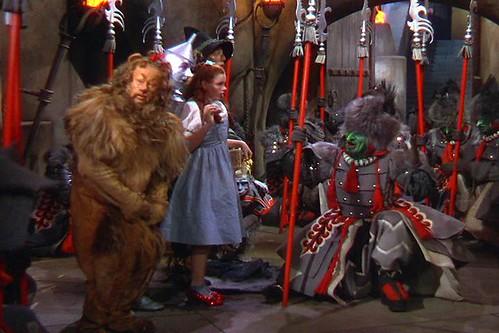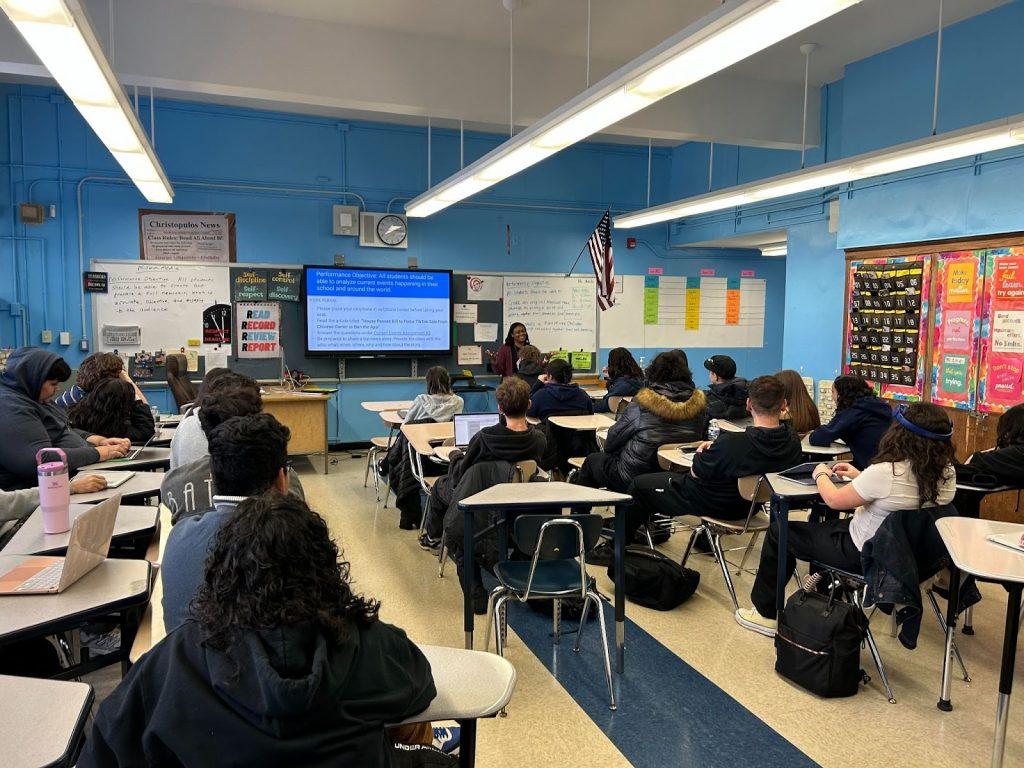by Alyssa Striano,
Individuals are often heavily influenced by the period in which they are living. Generations are typically broken up into different stereotypes that are essentially a definition of those belonging to it. These classifications help people understand what it is like to be apart of a time other than the one they were born into. Novels are screenshots of a time period, they capture what is going on and give a clear picture of everyday life. Many rely on works of literature to help them retain a greater understanding of certain times. The realistic representations provided by the authors of such novels tend to incorporate the experience they have had in their environment, which they incorporate into their writing. Authors of this sort truly encompass the society that they belong to. The esteemed Jane Austen is known for her portrayal of the Regency Period. Not only does she mimic her community in her writing, she also gives the audience insight on her personal life. Austen’s work captures the Regency Period for what it truly is and enhances the audience’s understanding of her own lifestyle, especially through her novels Pride and Prejudice and Northanger Abbey.
The Regency Period was a time of class and elegance, though it only lasted from 1811-1820. It all started when King George III in his youth had requested an increase in the amount of money he was given by his father that he would be able to spend on himself. Though his father was aware of the unwise choice he would make, he allowed his son to have what he wanted. That decision essentially encouraged King George III to make foolish financial decisions; he spent an abundance of money on items opposite of what the society actually needed. He drove his kingdom into debt with his excessive spending on lavish, seemingly unnecessary projects. His careless actions promoted an extremely luxurious community of people of which he ruled over. Though the Regency Period may appear as a glorious period to be involved in, some people felt it was not as productive as it should have been. One holding such an opinion was none other than Jane Austen.
An unhappy Regent Period member, Jane Austen was born on December 16, 1775. She, like many others of the time, was born into a somewhat large family made up of her father, mother, six brothers, and one sister. The creativity of Austen was ignited at a young age. It is said that Austen and her siblings were constantly writing their own plays and it is assumed her incredible talent as writer stemmed from there. Accentuating her creative genius, Austen was the mother of what we now refer to as Regency Romance. This genre is exactly what it sounds like: The story of lovers taking place during the Regency Era. In her life, Jane Austen has produced many published and unpublished works, ranging from personal letters to family and friends to novels such as Pride and Prejudice and Northanger Abbey. All of these pieces have taken aspects of the Regency Period and expanded upon them to give her audience the true feel as to what it is like to live in that time.
Jane Austen’s writing is largely affiliated with the Regency Period and expresses her overall experience while living within it. To portray herself and her lifestyle within her works, Jane Austen demonstrates numerous common aspects within her pieces. The size of families placed in Austen’s novels, the idea of her characters being flawed, the importance of letter writing, the significance of balls, and the message that love can not be bought were all placed as indicators of Austen’s own life and the environment in which she adapted to.
“Real people aren’t perfect, perfect people aren’t real” according to six sister girl group, Cimorelli. Even though characters in novels are fictitious, Austen accurately portrays this expression within the stories she writes. Austen’s characters may be unreal in the aspect that they are not living, breathing individuals that walked the earth, but they have authentic personas. They are brought to life through the audience itself. The connections between the novel’s readers and characters grow stronger as individuals discover the main characters are flawed, as are they. Instead of giving her characters a perfect life, with a magnificent appearance, and an abundance of money, Austen encompasses the reality of her time by making them like actual people who would be living in her time (or an extremely exaggerated version of them to exemplify the mindsets of those surrounding her). The universal relatability of Austen’s characters makes them extremely popular in the world of literature.
First impressions are an extremely crucial part in building relationships with others. Based upon those impressions, most are able to predict how the interaction between themselves and the other person will go and if they would like to pursue an actual friendship with that other individual. Unfortunately, first impressions aren’t always correct. In Pride and Prejudice, Elizabeth Bennet decides that the miniscule amount of time that she spent with Mr. Darcy was way more than enough. Elizabeth describes Mr. Darcy on their first account as being, “… the proudest, most disagreeable man in the world…” (Austen 18). Though their first encounter had been rough, if Elizabeth had completely ignored him for the rest of her life, she would not have realized how great of a person that he had always been. This judgement on Elizabeth’s part is extremely important, as she made a mistake. All people make mistakes, but for the most part, characters in novels are set up to be these perfect people who never get anything wrong. Misunderstanding the situation at hand entirely on Elizabeth’s part just proves how human she is. She was not understanding where Darcy was coming from, as she was unfamiliar with his personality. All individuals have wrongfully believed something at some point in their life. The fact that Elizabeth embraced that her misjudgement of Mr. Darcy upon their meeting (as she ends up falling in love with who he really is and marrying him), demonstrates how real of a character Elizabeth is.
More misjudgements and imperfections regarding characters come into play within another one of Austen’s work, Northanger Abbey. Obsessed with the spooky novel Udolpho, Catherine Morland becomes a bit blinded from reality when she visits Henry Tilney’s home, Northanger Abbey. Instead of freely enjoying herself, Catherine believes there is something suspicious going on with the Tilney family. She was invested in finding out the truth about the family, as she believed that General Tilney was responsible for the death of his wife. As a matter of fact, Catherine was so caught up in this fantasy world she created for herself, when snooping, “Her fearful curiosity… a few inches…” (Austen 133). Even though Catherine knew it was unjust of her to look through the personal belongings of others without their permission, she could not contain herself because she absolutely needed to know what was going on. Like all humans, consciously did something wrong because she believed it would benefit her. Though not a justification for the wrong, she made a humanly mistake driven by selfish curiosity that all real beings have committed at some point in their lives. Without the falsification and wild imagination (yet another mistake) prompting her to make the decision to explore the Abbey, Catherine would seem to be an almost perfect individual, making her story unrealistic.
A story of the faults of a single character would be quite a drag, so Austen exemplifies the reality of her time through the addition of other characters to her novels. Everyone starts from somewhere, that somewhere typically being a family. The family trend during the Regency Period was to have as many children as possible, this usually meant from around 10 to 15 children per couple. This was majorly influenced by the higher infant mortality rate within this pre-industrial period along with the higher demand for workers. These pronatalist factors encouraged individuals to have more babies. Though those were large factors that played into why families grew so rapidly, according to Vic Sanborn in 2011, “…birth control resembled a game of Russian Roulette more than family planning.” Individuals were not entirely sure how their bodies functioned so they were basically taking chances with pregnancy. They did not have a clear idea of how they could stop themselves from getting pregnant so their main means of prevention was abstinence… Though there always was the chastity belt! Jane Austen, like a majority of people from the Regency Period, came from a family with quite a few siblings. Austen portrays her characters in a similar way.
Though Jane Austen tends to focus her novels on a specific character, the audience is not limited to the story of that single character. The reader is also introduced to other family members of the main character or the family members of friends of her main characters. This is evident in Pride and Prejudice. The Bennet family portrayed in Austen’s novel consists of Mrs. Bennet, Mr. Bennet, and their daughters Jane, Elizabeth, Mary, Kitty, and Lydia Bennet. While the whole love story between Elizabeth and Darcy is the dominant storyline, the audience is also aware of the situations occurring within the lives of Elizabeth’s sisters: Jane (the character, not the author) and Bingley’s love story, along with the elopement of Lydia and Wickham. By doing this, Austen’s plotline represents her society in it’s entirety, as she demonstrates those who fall in love over a long period of time, those who instantly connect, and those who have wicked intentions. She also satirically illustrates how families may have dealt with certain situations. Lydia’s elopement for instance showcases how passionately the people felt about living up to society’s regulations. Mrs. Bennet, evidently heartbroken, had been said to be “…really ill and keeps in her room” (Austen 528) after finding out about the elopement. Mrs. Bennet doesn’t actually care too much about her daughter’s well being, she is more so concerned about what those in the community will think of her when they find out that her daughter had eloped. She believes her and her family will be degraded and she is dreading that. It is clear that Austen’s use of family ties was an attempt to embody the unusual priorities of the Regency community through exaggeration.
Another work representing the extensive family sizes during the Regency Period is Northanger Abbey. Through the relationship between Catherine Morland and her brother, James Morland, Austen shows how tightly knit the families of Regency England are. Upon discovering that her brother’s fiance (and one of her closest companions the time prior to this event), Isabella, was said to be cheating on him, Catherine decided it was best to essentially disown her friend. Catherine obviously realized how much pain James was suffering through and recognized the horrible decision Isabella had made, hence cutting her out of her life. Disregarding the truth of the situation or not, rumors typically would not shatter a friendship (such as the one between Catherine and Isabella). Yes, they may cause a slight barrier between the friends, but to completely break them apart seems unlikely… Especially since the situation did not directly correlate to Catherine’s life. The choice to leave Isabella completely shows how much Catherine cares for her brother. Instead of civilly, not involving herself in the relationship between James and Isabella, Catherine decided to exclusively stick with her brother through it all. The bond between Isabella and Catherine was evidently no where near as strong as the one between James and Catherine, as she was effortlessly able to break free from Isabella’s fellowship. James and Catherine were extremely close, as they would make somewhat drastic sacrifices for each other.
Partaking in social gatherings within the Regency community was an extremely popular form of entertainment. Occurring often, social balls ranged in sizes. Some could have been held at beautiful country homes, while others may have been at a simple family dinner. While participating in the collective affair, dances between men and women took place. Unlike current society, dances were always between two people and last for approximately a half hour. Attending the parties held was one of the main social interactions available in the Regent community, therefore it was crucial that individuals attended so they could mingle. If societal members did not participate in these significant events, they were essentially lowering their chances of meeting their true love. Social get togethers play a critical part in the time period, as they provoked individuals to converse amongst each other. These social affairs played a major part in determining who men and women would marry, as they would meet and build a relationship at the parties they attended, which is exactly how Austen portrayed them in her novels.
When reading Austen’s Pride and Prejudice, the characters were often found at a social event, especially towards the start of the novel. At said parties, some of the main characters come into contact with the one they fall for, for the very first time. Jane Bennet for example, first interacts with Mr. Bingley at a ball. The couple had an instant connection, as Miss. Bennet was the only lady Mr. Bingley invited to join him in a second dance. This seemingly insignificant request actually symbolizes a strong interest in Jane on Bingley’s part. During the Regency Period, if one wanted to spend more time with an individual or if they thought that they were a good pairing, they would ask them to dance for a longer time with them. Since Bingley fell for Jane, he wanted to show it by inviting her to dance longer. This event foreshadows their marriage at the end of the novel. Bingley being intrigued with Jane was exemplified through his invitation of her to visit him and his family at his house. This spark and initial correspondence between the two lovers would not have been relevant without their meeting at the ball. Austen demonstrating the beginning of a deep relationship at this social event provides evidence that they played a large part on how people met their partner during the Regency Period.
The portrayal of balls is also found in Northanger Abbey, where it plays the same essential part in the life of Catherine, as it is where she meets her future husband. An immediate connection, such as the one between Miss. Bennet and Mr. Bingley was drawn up between Miss. Morland and Mr. Tilney. By the second time they had come into contact with each other at a ball, Catherine vowed that she did, “…not want to talk to anybody” (Austen 59) upon being interrogated by Henry on the subject of other males at the ball. The couple had just finished a conversation about how dancing is similar to marriage, so Catherine stating she has no interest in speaking to anybody but him right after that can symbolize that she wants to be committed to Henry for all of her life. He stole her heart and there was no going back. Their initial meeting at the party is what brought them together and the likelihood of them encountering one another without the help of the party is pretty slim. The ball helped is the platform of their relationship, it was a necessary stepping stone for them to build up to what they were to become in the future. Austen’s use of the social event to have Catherine and Henry meet was a realistic representation of how many Regent’s met their spouses.
Some individuals may not have been able to attend every Regent Ball that was ever held. Though the opportunity cost of not going to the parties may be missing the chance to communicate with new people, it was still feasible for the individuals that could not make it to the balls to communicate with people they had already made acquaintances with. They also used this positive resource as a means to stay in touch with their families if they traveled a long distance and could not get word to them any other way. To do so, they simply had to fall back to writing letters with one another in order to keep in touch. Letter writing during the Regency Period was much different than what it currently is, it was much more complicated. Typically, during the Regency Period, those who were sending the letters were not the ones who had to pay for it. The receivers were the ones who had to pay. Payment was recorded by the amount of paper that was used to write the letter (the overall weight) and the distance that need to be traveled to deliver it. This caused people to be very conscious about the length of the letters that they were sending and they tried their best to squish all of what they had to say onto very limited pieces of paper by writing in tiny handwriting. Writing letters was the most common way of communicating with people that were too far away to speak directly with, since of course cell phones were not a thing at the time. Not only has Austen written an abundance of letters to her family and close friends, the characters in her novels do so as well.
Letters play a major part in Pride and Prejudice, for example, Elizabeth Bennet was too far away while she is staying at Pemberley for her sister, Jane, to directly go to her and explain the horrible situation that has occurred between Lydia and Wickham. She writes, “Imprudent as… to Scotland” (Austen 526). Jane knows that her sister would want to be updated with the wellbeing of her family, so she strives to keep Elizabeth informed through letters that she writes. Though Elizabeth is pretty far away and direct communication at that moment between the sisters was impossible, they were still able to talk to each other and figure out what was going on with the help of a written messages. Without the letter that Elizabeth had received telling her about Lydia running off to get married with Wickham, she would have assumed that everything was fine and would not have returned home to try to help straighten out the wild situation. Letters were a highly valued communication tool that helped spread urgent messages to others during the Regency Period. Austen made this evident through her utilization of them within her writing.
Northanger Abbey also touches upon the importance of letters but in a somewhat different way. Letters were also positively implemented when individuals needed to explain themselves to others, but could not see them face to face. This is evident when Isabella tries to convince Catherine in a letter that she is loyal to Catherine’s brother, James. She writes, “He is the greatest coxcomb I ever saw, and amazingly disagreeable” (Austen 180) on the topic of the man that she was allegedly cheating on James with, but goes back onto talking about fashion trends. Obviously, Catherine did not believe her, after she carelessly undermined the true problem of the situation she put herself in. Through the letter, the audience can see how ridiculous of a character Isabella is, as she does not have her priorities straight and exaggerates her feelings towards people. Though Catherine was unconvinced of its sincerity, Isabella’s utilization of a letter in attempt to get the letter across is a significant factor of the situation. Being a great distance away from Catherine at the moment, Isabella was aware that the only way to obtain and hold onto Catherine’s attention was through a letter. She wrote the letter in hopes of winning James back and to clear up her side of the story. Regardless of her lack of success, Isabella would not have been given the opportunity to explain herself if it wasn’t for the letter that she tried to write. Communication through letters in Austen’s novel played an important part in the lives of her characters, as it allowed them to express things they were not able to in real life.
It was not uncommon that during the Regency Period, people would get married in order to get to a higher social standing or to receive money to support themselves and the rest of their family. People of that time rarely had genuine feelings for the ones that they chose to spend the rest of their life with. As opposed to those radical traditions of the Regency Period, Austen was a firm believer that people should marry for love. She was totally against the idea that people should get married to someone for what they had the ability to supply them with. Being the woman that she was, when proposed to, Austen initially agreed to marry the man requesting her hand. On the next day when she recognized how horrid of a commitment that she made, she wrote a letter to her temporary fiancee calling everything off. She felt obligated to marry based on her societal role as a woman, but realized that she shouldn’t marry just to get married soon after her pledge. Being the social satirist she is, Jane Austen mimics this event somewhat in her novels.
This message is pertinent in Pride and Prejudice. Elizabeth Bennet, like Austen, believes that marriage should be reserved for love only. She was not interested in marrying a man for the wealthy advantage that he could or could not offer her, Elizabeth wished to marry whomever her heart desired. On the contrary, her mother, Mrs. Bennet, will stop at absolutely nothing to get her hands on a little extra cash to help support her family and believes the faster one marries someone for money, the better. Mrs. Bennet even states, “…it is better… pass your life” (Austen 42). As a satirical representation of an abundance of actual Regency Period woman, Mrs. Bennet believes the less you know about the person you are marrying, the more successful the marriage will be because you don’t know enough about the person to really dislike anything about them. When you’re not given enough time to truly know someone, you can’t be sure if you actually want to spend the rest of your life with them. This explains why Mrs. Bennet is terribly heartbroken when Elizabeth declines a proposal from the atrocious, but somewhat wealthy, Mr. Collins. Elizabeth’s mother even threatens to never speak to her again for turning down the proposal, as it costs her the possibility of gaining more money. In no particular rush to get married, Elizabeth made sure to put her happiness before all else. If she did decide to get married, it would be to a man that she fell in love with, not with someone her mother is forcing her to “love”. This mindset was unlike a vast majority of those who surrounding her during the Regency Period.
The idea of getting married for love is shown in Northanger Abbey as well. Catherine Morland is yet another young woman Austen portrays choosing to hold off on marriage until she has found the perfect man for her. At a ball, Catherine first became associated with the man that she fell in love with, Henry Tilney. After speaking to Mr. Tilney, she recognized that they connected and she desired to be with him. In no rush to settle down, Catherine wanted to marry the person she felt connected with most, which is why when she discovered that her acquaintance, John Thorpe, was hoping to propose, she turned him down before he even had a chance to ask. Elizabeth was never attracted to him, the day they met, she observed how he, “…observed that… please Catherine…” (Austen 34). This excerpt exemplifies how truly rude and arrogant John is. This man reveals himself early on as quite foolish and he based on the mean ways that he treats his “friends”, he doesn’t deserve to have any. If Catherine were to marry John, she would be forced to deal with his cruelty and degradation. Instead of living a life of misery, Catherine made the decision to not subject herself to a treacherous marriage in which she was essentially disgusted by the way her would-be spouse, John treated other people. She was not urgently searching for someone who would support her, so she had no real incentive to marry Mr. Thorpe. Even if marrying John would help her out financially, it was not worth her giving up what she cherishes most, her happiness. A marriage without love is nothing, in her opinion.
All people are shaped by the times that they live through and express that in some way, whether it be through art, literature, or even by talking to others. The stories they spread linger and inform future generations on what it was like to live in times before them. It is important for the reader to recognize Austen’s realistic representation of the Regency Period and of her life within her novels, as it gives the audience a greater appreciation of the time period. There were actual people who went through the events being portrayed, it is important that people of the current day recognize that. As time moves on, so do the outlooks of individuals. One of the only ways to preserve a time comes from the books constructed by those living in that time. Austen’s novels were inspired by true events and actual people of her time to demonstrate the life that she was living. Though a fiction writer, Austen gave her characters a life due to the since similar situations they encountered to so many real humans. The writing of Austen is more than just words on a page that tell delightful stories, it speaks for those who may not have had a voice in the Regency Period.









































